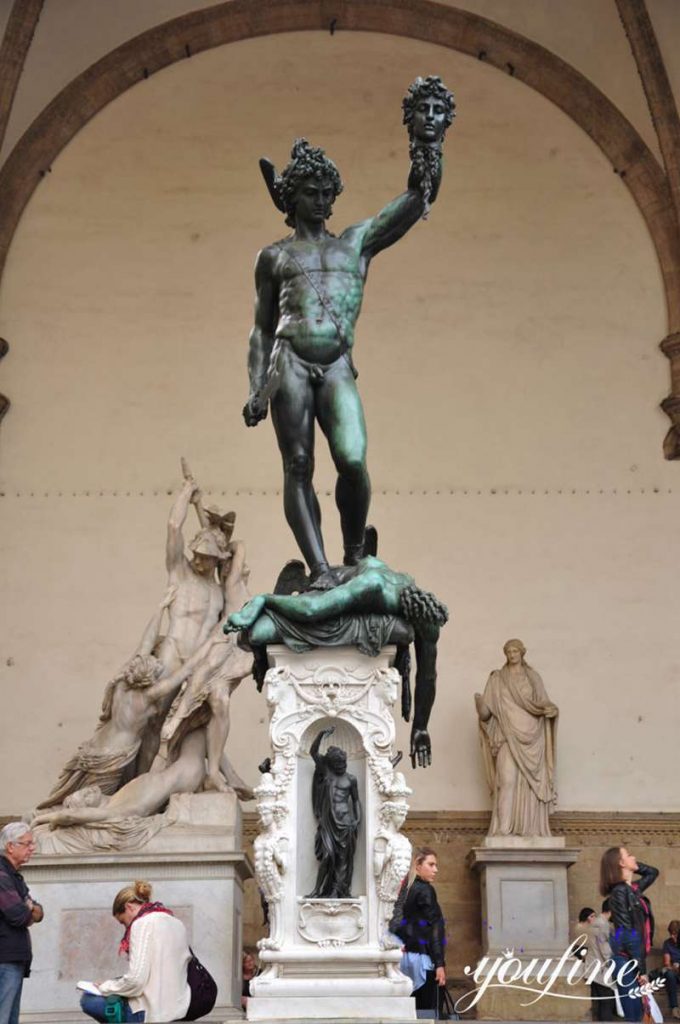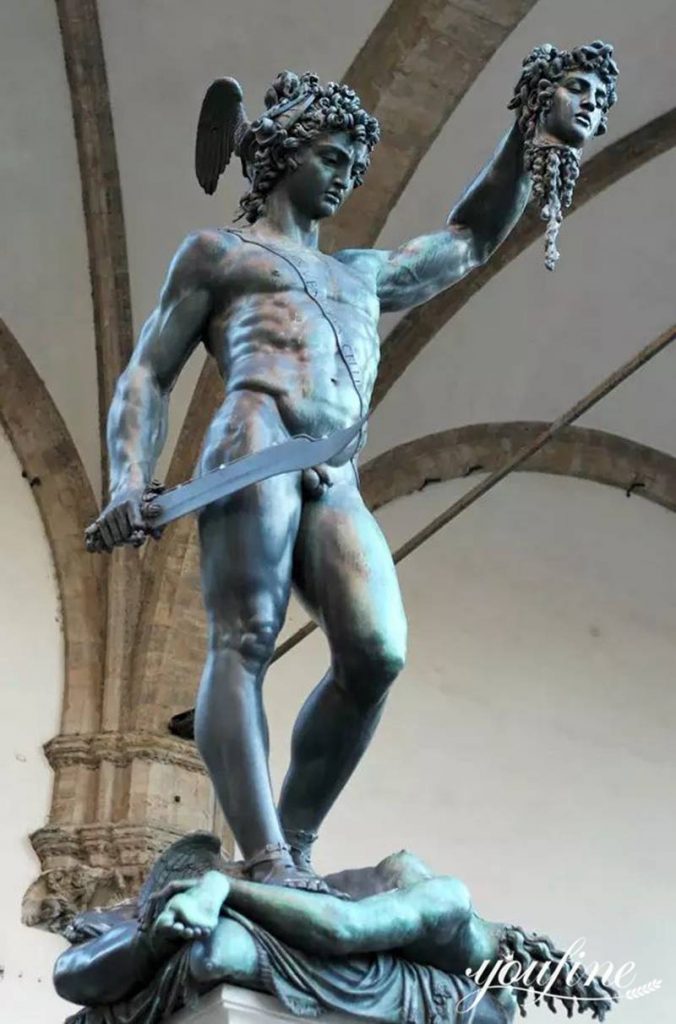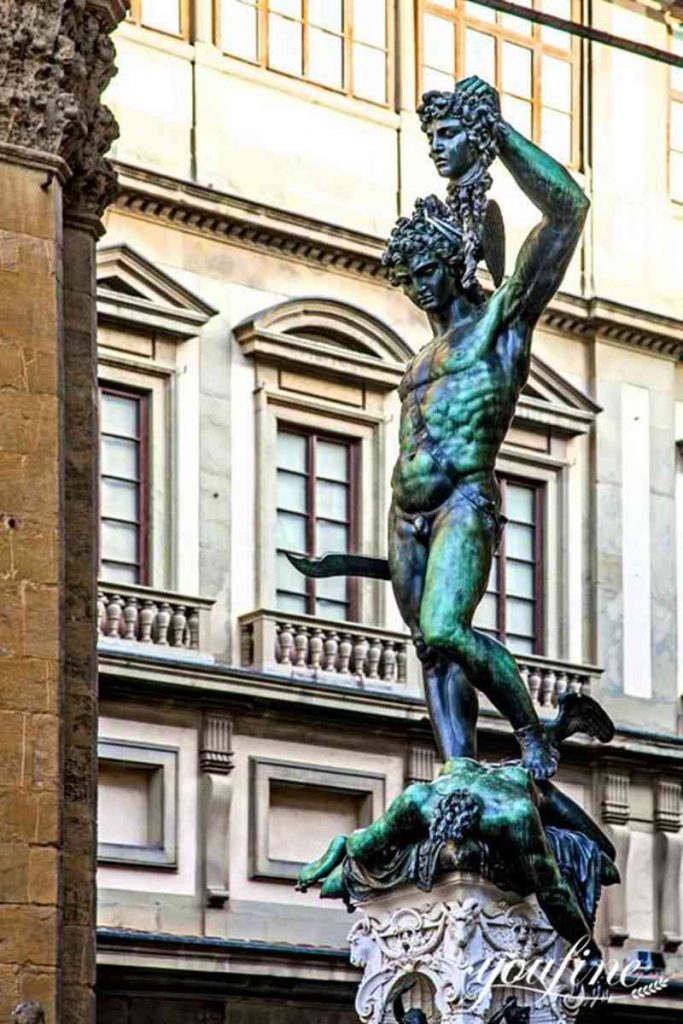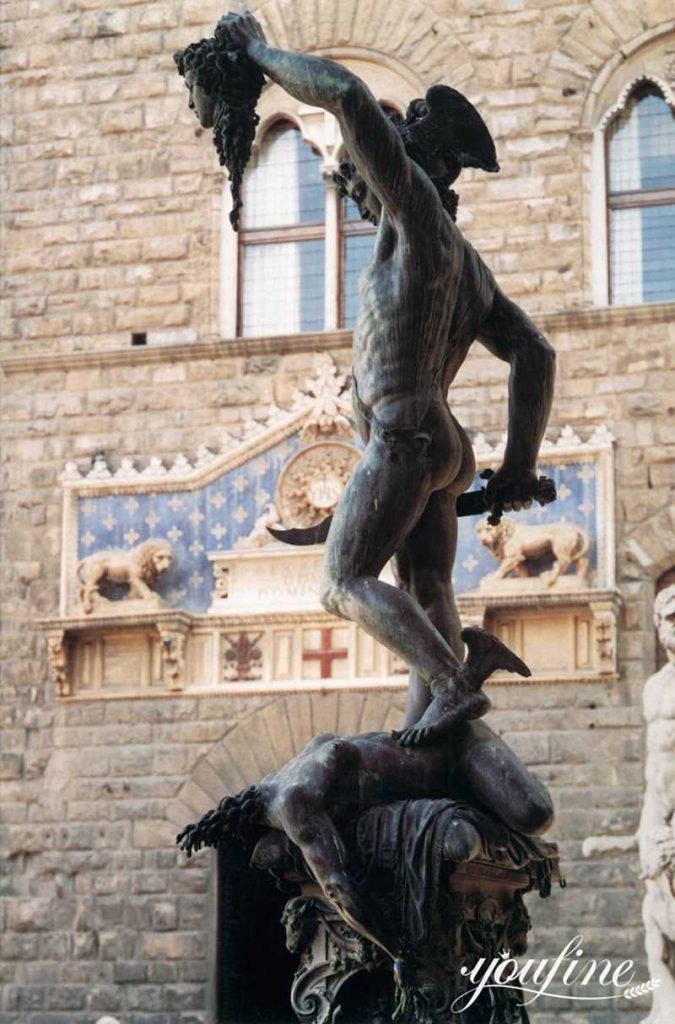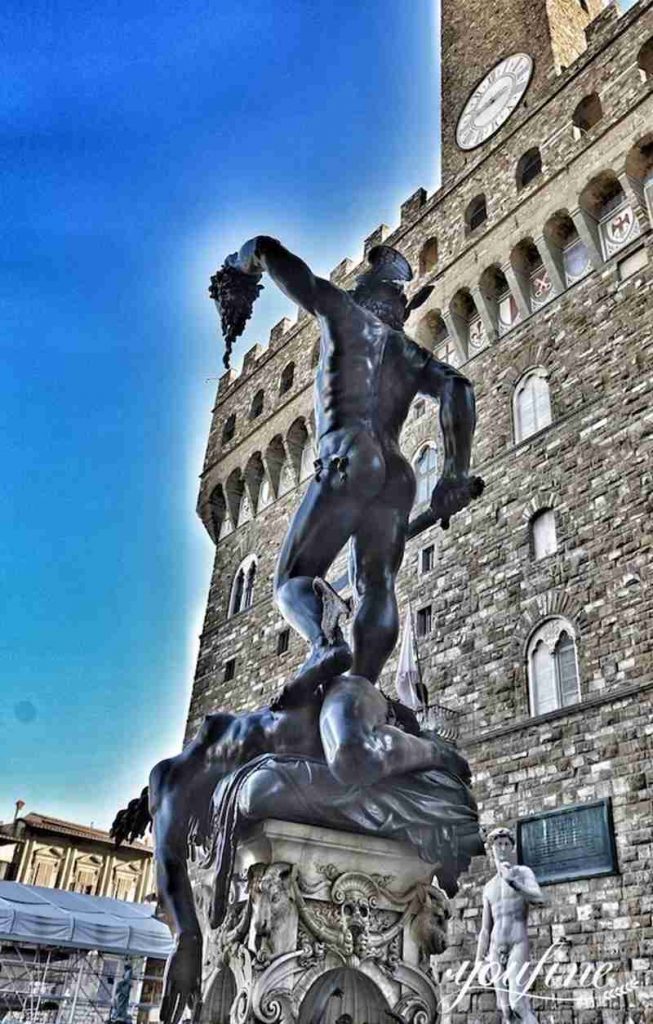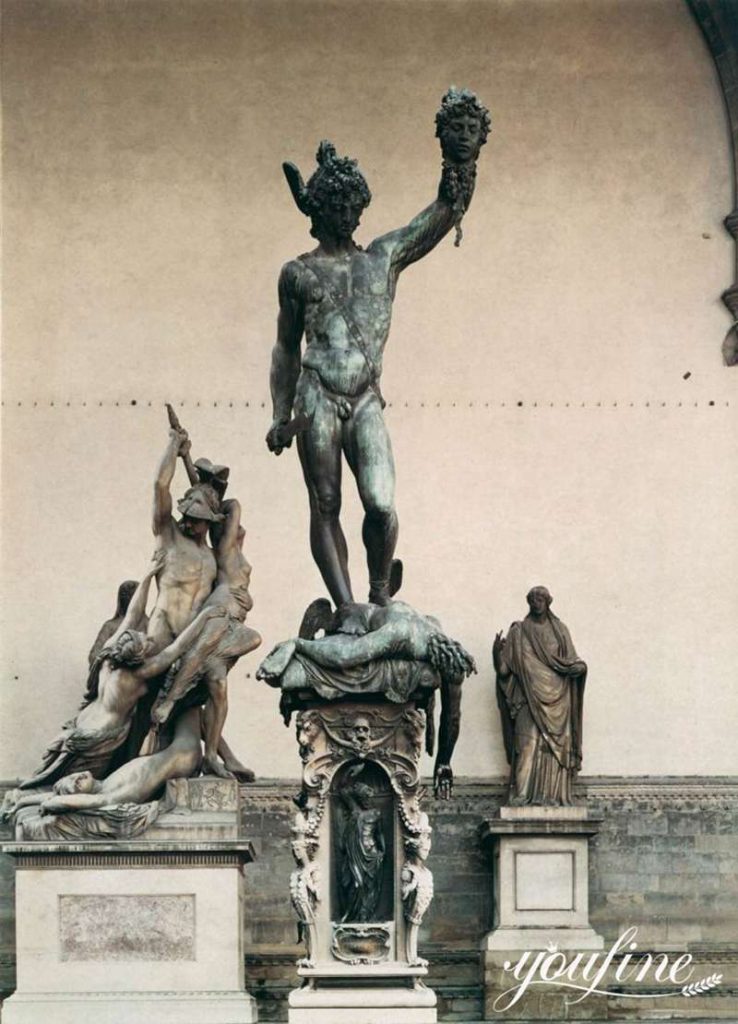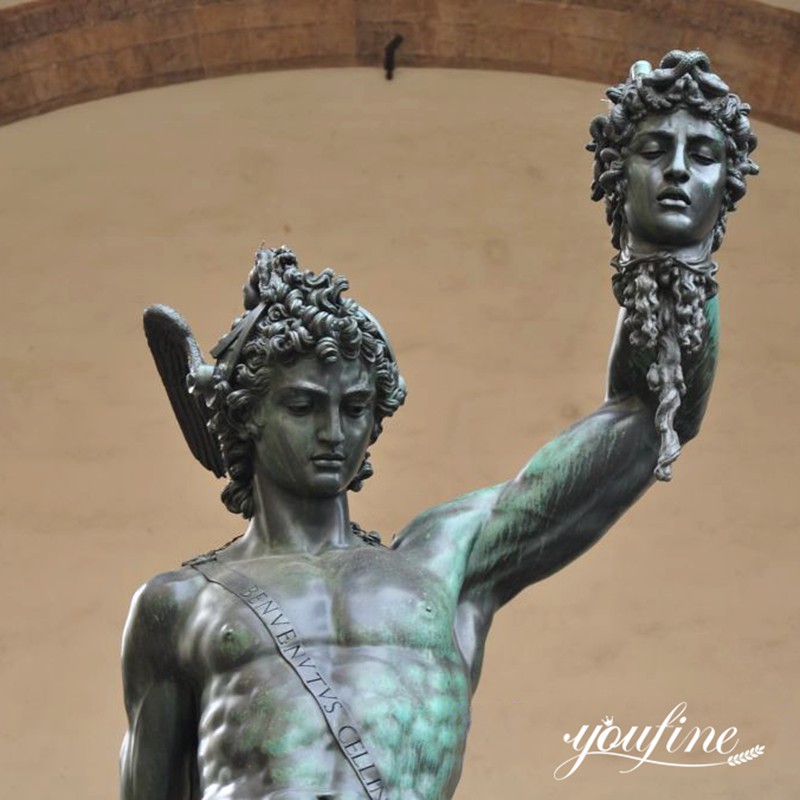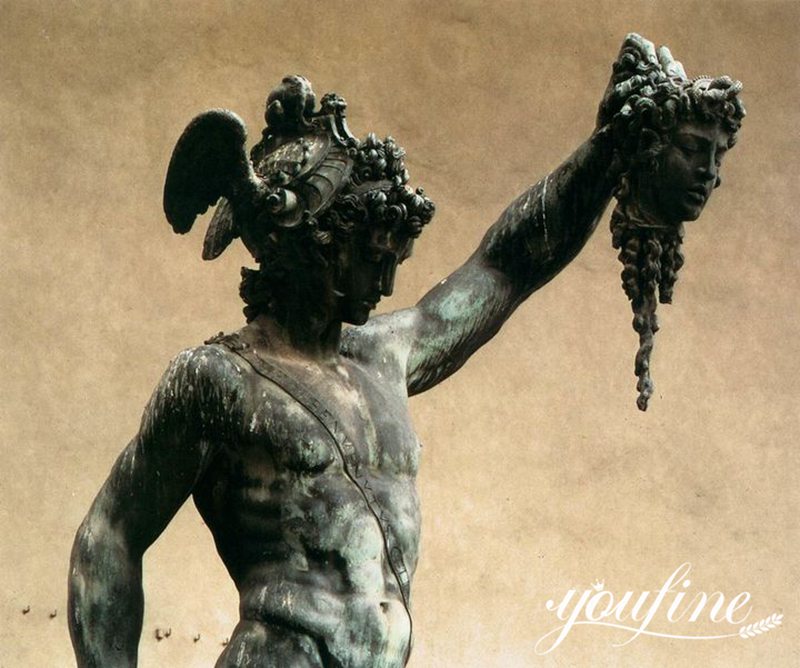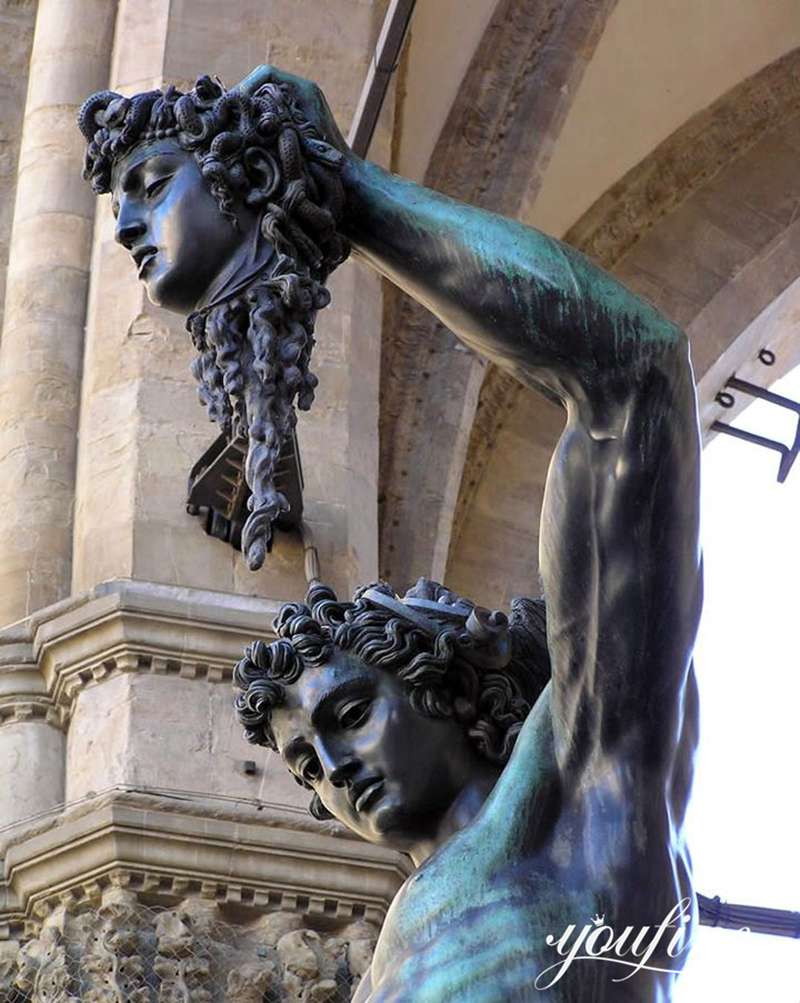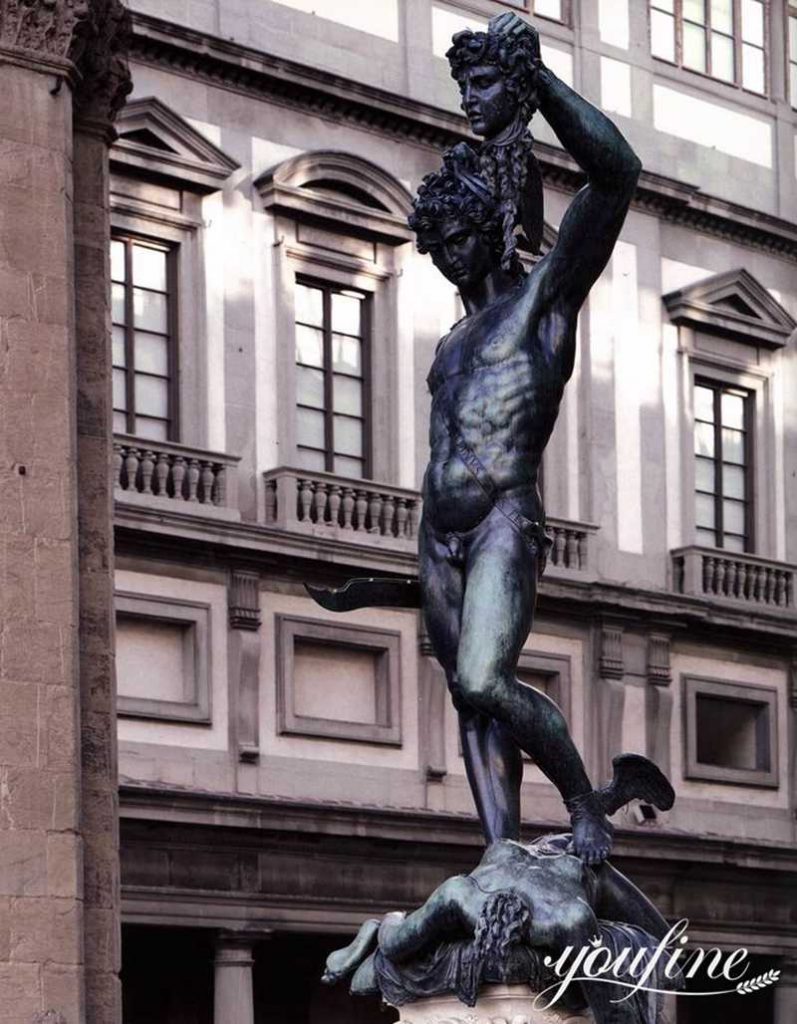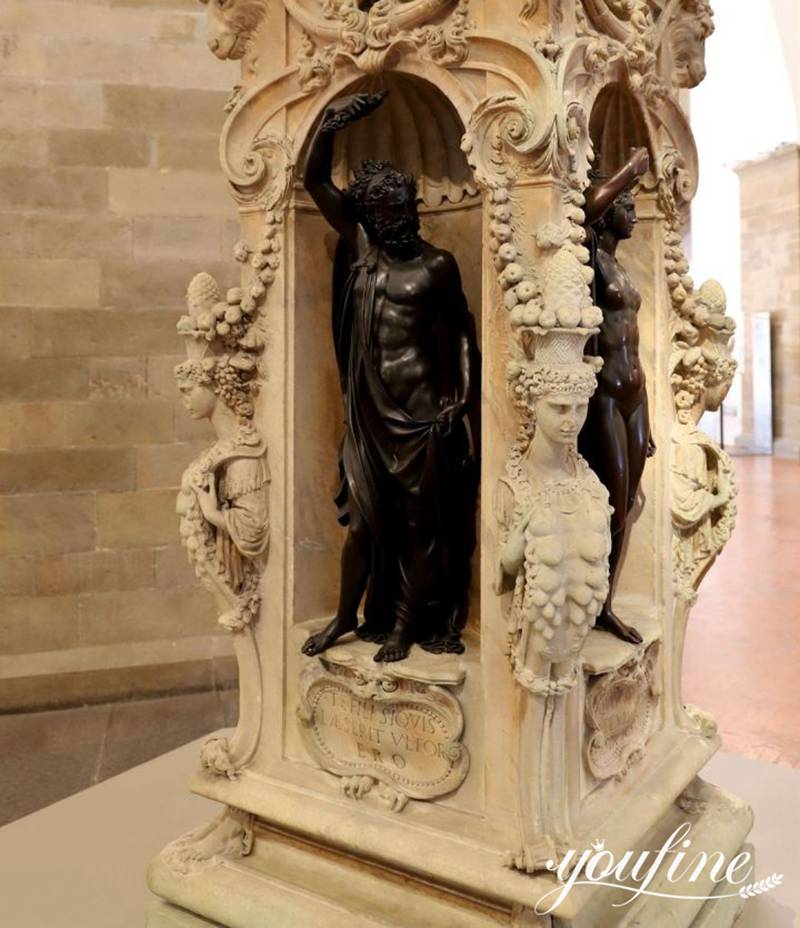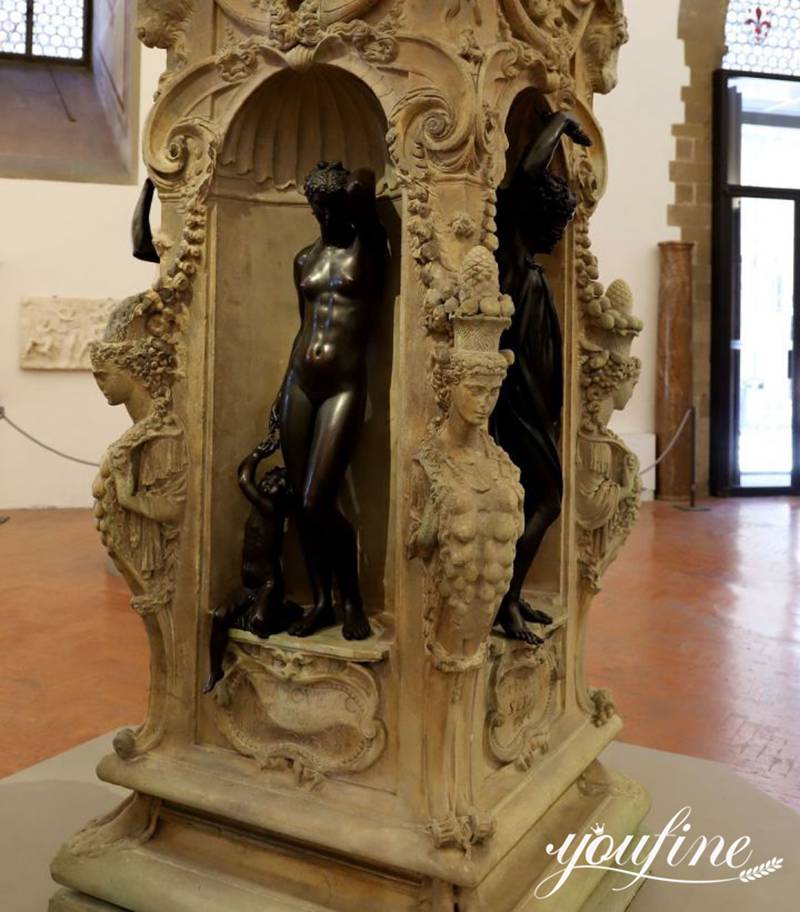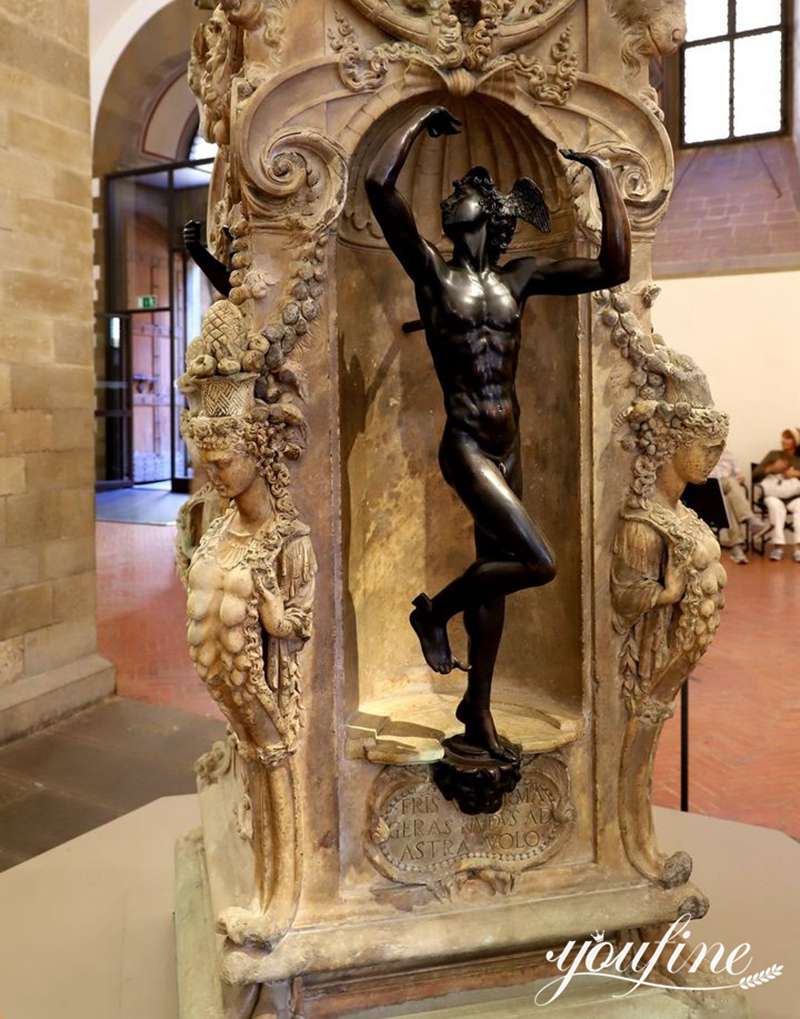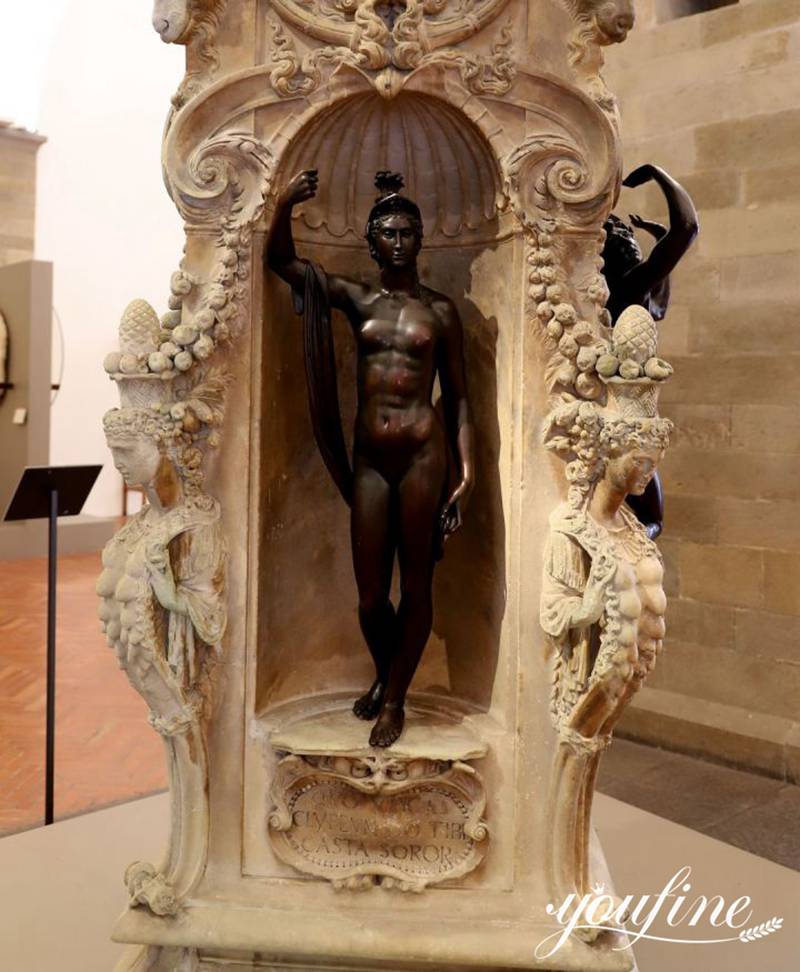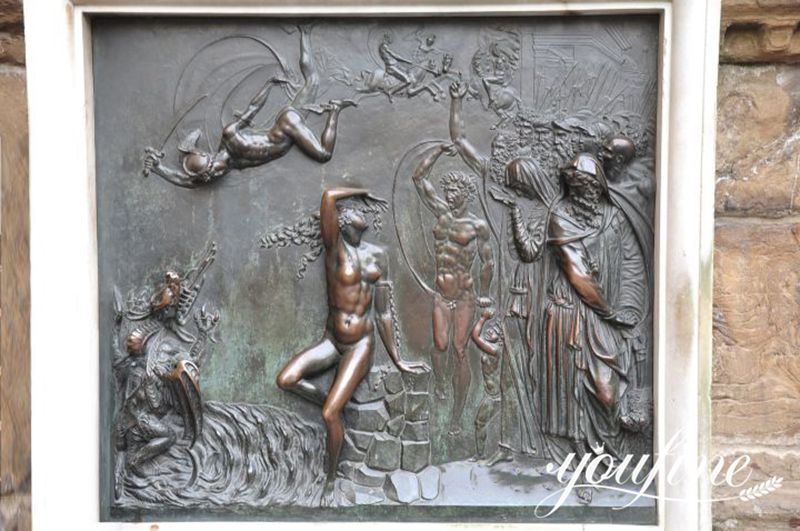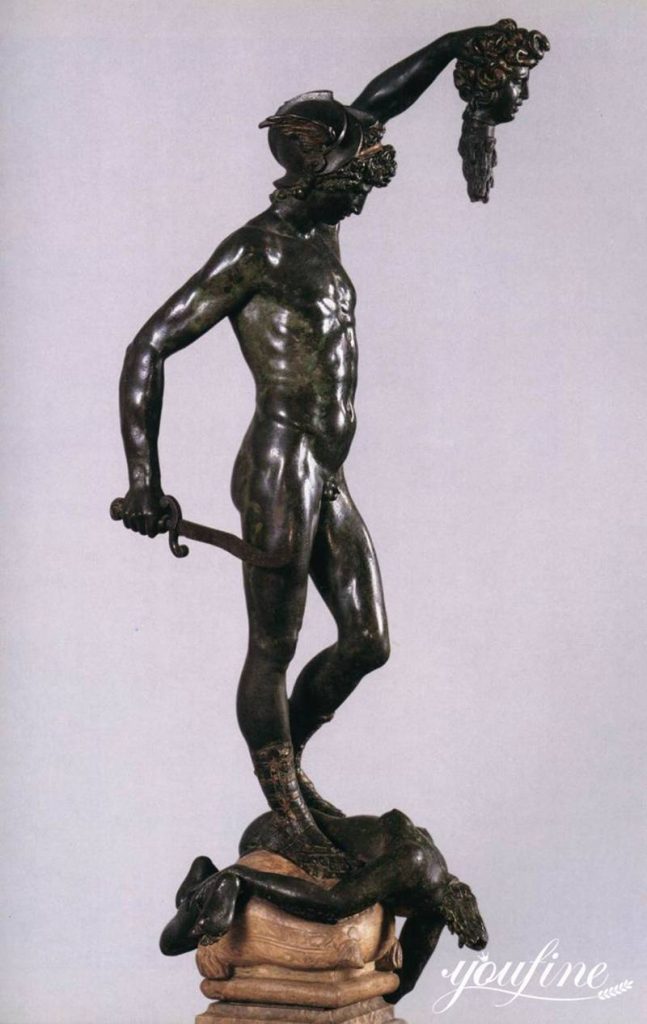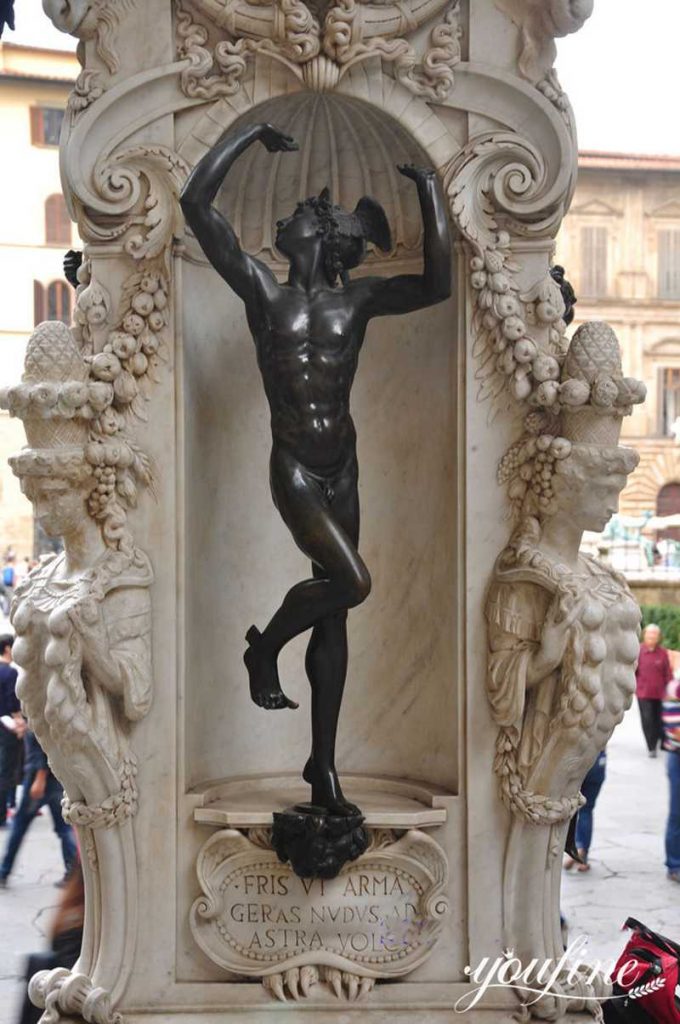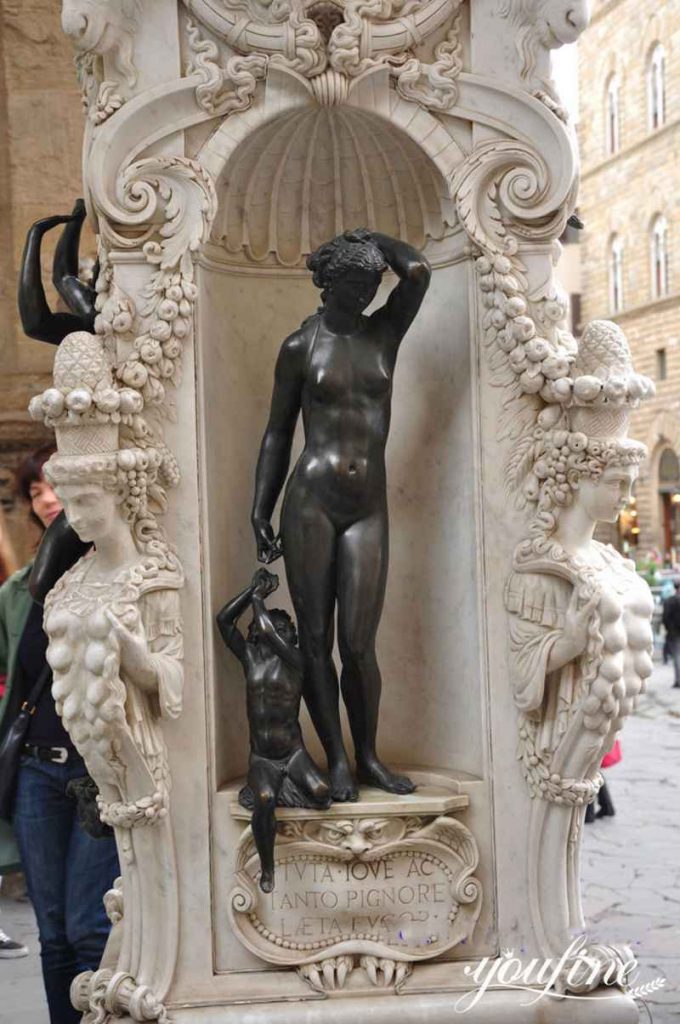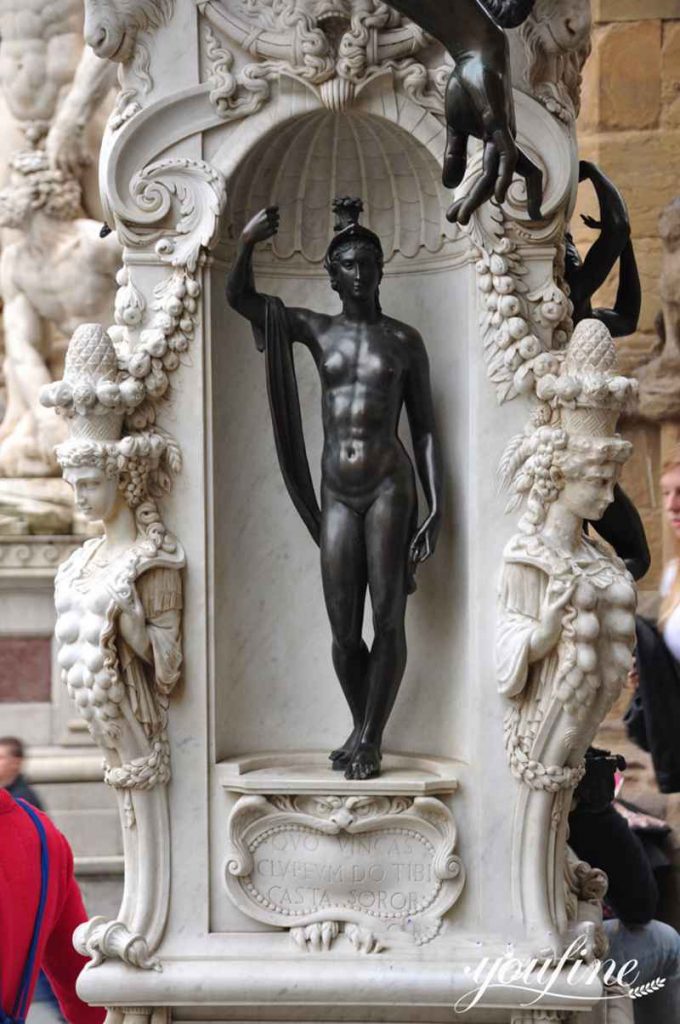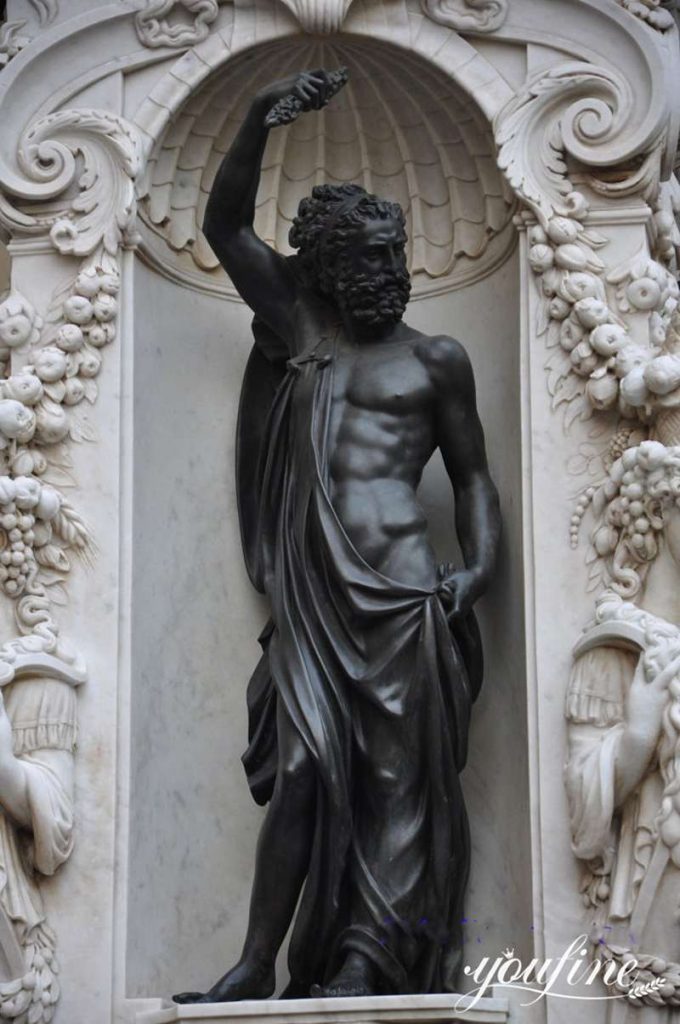Where is the Perseus Statue?
Perseus with Medusa head is a famous statue by Benvenuto Cellini. Found under the loggia dei Lanzi in Piazza Della Signoria, Florence’s Piazza Della Signoria. This Perseus statue is one of the most important examples of Italian Mannerist sculpture. The Piazza Della Signoria in Florence, Italy, is named after the Palazzo Vecchio (also known as the Palazzo Della Signoria) with the bell tower on the square. Palazzo Vecchio was once the residence of the Medici family and later became the town hall of Florence. Therefore, the lord square is also called the town hall square. This square is “L” shaped, and there are the famous mercenary loggia, Uffizi Gallery, Palazzo Vecchio, and some famous sculptures on the square.
Features Of The Mercenary Loggia
The original function of the mercenary loggia was only a public place for announcements and celebrations, as well as for people to shelter from the rain and shade. Later, because of Cosimo, I feared that his safety was threatened. So it was used as a gathering place for the guards, and it has its current name. Today, it is still the best resting place for tourists. You could sit here when you are tired from shopping, and watch the bronze statue of Perseus beheading Medusa, kidnapping Sabine women, and robbing Polly while refueling. These sculptures have been standing here since the Middle Ages. Moreover, these sculptures have experienced the gorgeous wind, rain, and sunshine of Tuscouldy. Moreover, every year tens of thousands of tourists hurriedly rub shoulders or sit side by side. However, the story behind the statue is also worth exploring and understanding.
Perseus Kills Medusa
First of all, the closest thing to Palazzo Vecchio in the mercenary loggia is the bronze sculpture of Benvenuto Cellini. Sculpture from about 1545-1554 bronze statue “Perseus beheading Medusa”. Here is a reproduction, the original is in the collection of the Bargello Museum. Moreover, the sculpture represents the beautiful boy Perseus in ancient Greek mythology. The moment he raised his head high after beheading Medusa, the Gorgon. In addition, Medusa’s head and neck seem to be splattering blood, which is very realistic.
Details Of The Medusa Sculpture
Francisco Bozzi said: “Medusa’s body…was lifeless and collapsed. It shows very clearly how lifeless flesh could be represented”. Blood is the substance that symbolizes life. Also, the inner movement of the human body. An external and materialized expression is obtained in Cellini’s sculptures. Thus, the process of Medusa’s death is more vivid. In order to satisfy the effect of Medusa curled up in a ball, Medusa’s left hand grabbed the ankle of her left leg. Also, the holes in her knuckles are powerful. Obviously, Medusa seems to have just woken up from a sweet dream. Her breasts were springing upwards. Moreover, she tried to fight back. But Perseus, who had been prepared, decisively ended her life.
Details Of The Perseus Sculpture
The angry and handsome face of Perseus lowered slightly. He was a little thoughtful. Also, he seemed to be easing the tension that had just ended. The anatomy of the statue is expressed clearly and precisely. Even Perseus’s ribs are the same number as a real person. Among Cellini’s many sculptures, this “Perseus and Medusa” commissioned by Grand Duke Cosimo is the most outstanding.
Medusa’s Head
Medusa was an ancient Greek gorgon whose eyes were petrified by anyone who saw her. Medusa died at the hands of Perseus. Perseus beheads Medusa with the help of Athena and Hermes. Perseus dedicated his head to Athena. So the head was embedded in Athena’s Aegis.
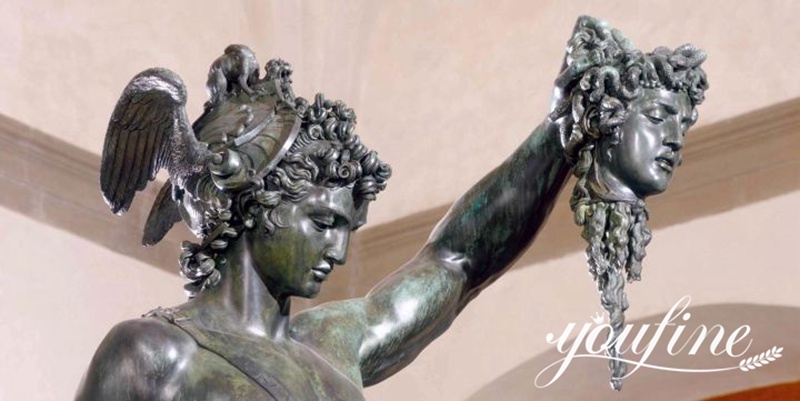
Son Of Lord Zeus
Perseus was the son of the chief god Zeus. The ancient Greek king of Argo had only one daughter but never had a son. When he asked the oracle, the oracle said that he was destined not to have a son. Even worse, he would die at the hands of his grandson. So the king locked his daughter in a copper tower. This cut off her contact with the outside world. But Zeus turned into a golden rain to mate with the princess. This is how Perseus came into the world. The king put his daughter and grandson in a wooden box and threw them into the sea. But Zeus secretly sheltered the mother and son. The wooden box arrived safely at an island called Serifos in the Aegean Sea. The king of the island took in Perseus and his mother. The king also gradually fell in love with Perseus’ mother.
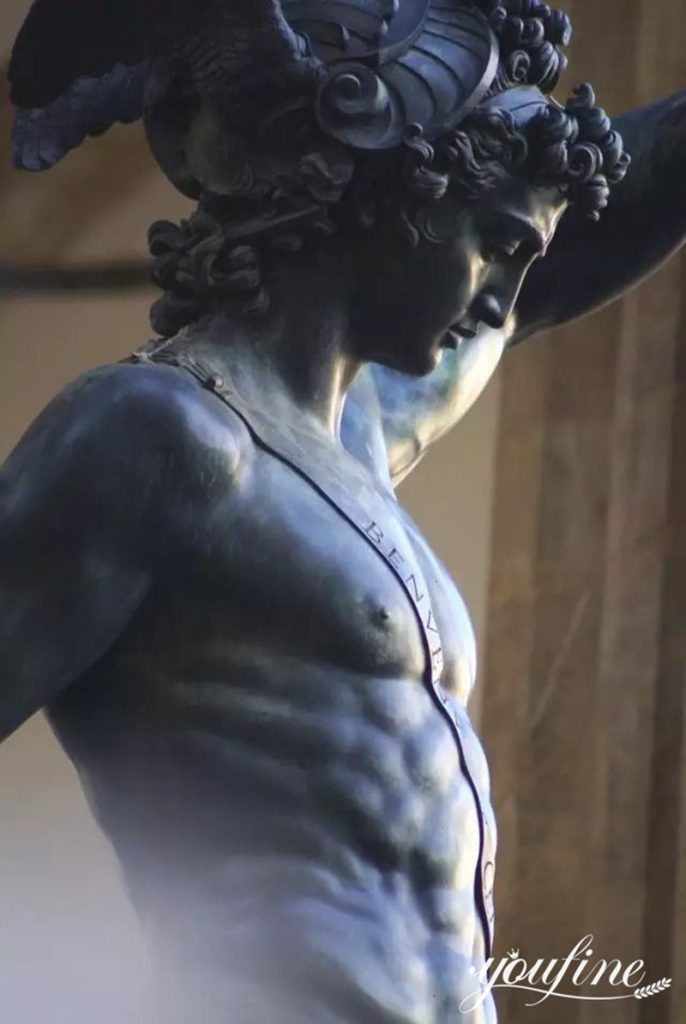
Perseus Is a Famous Hero
Perseus is a famous hero in Greek mythology and belongs as a demigod. He is the son of the chief god Zeus. Abandoned by his maternal grandfather, he and his mother drifted to Serifos. And he was taken in by the king there. The king of Serifos married his mother. He encouraged Perseus to take risks and kill the banshee medusa. Medusa is the most dangerous of the three Gorgon banshees. Medusa was originally a beauty who offended the goddess Athena. So her hair turned into a viper, and her face was extremely ugly. And anyone looking at her would instantly turn to stone. Later, Perseus overcame many difficulties and found Medusa. Perseus fought against the goddess Athena with a shiny bronze shield he had obtained from her. And, he cut off her head through the reflection of the copper shield.
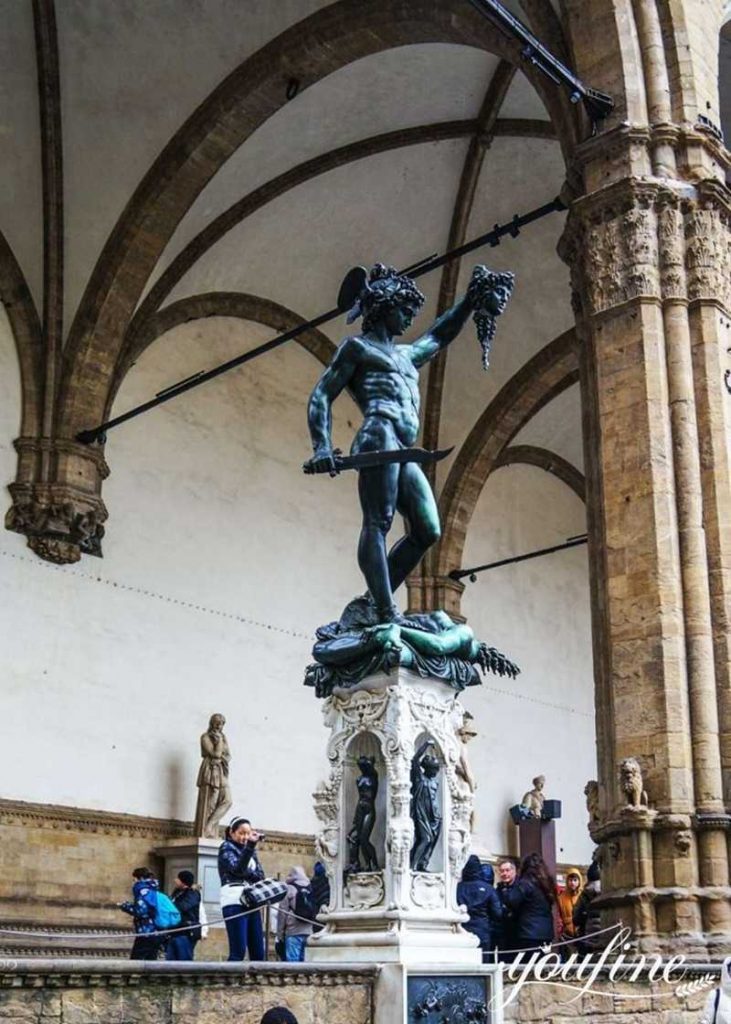
The Heroism Of Perseus
Cellini’s Perseus is a moment of silence right after the battle. He presented a naked figure with a dashing and arrogant attitude. This sculpture is full of monumental and heroic spirit. Perseus raised Medusa’s head with his left hand. She holds a knife in her right hand. In addition, Perseus’ center of gravity rests on his strong and powerful right leg. Moreover, he has a clear and toned muscular outline. As a result, the sculpture was shaped with incomparable mastery.
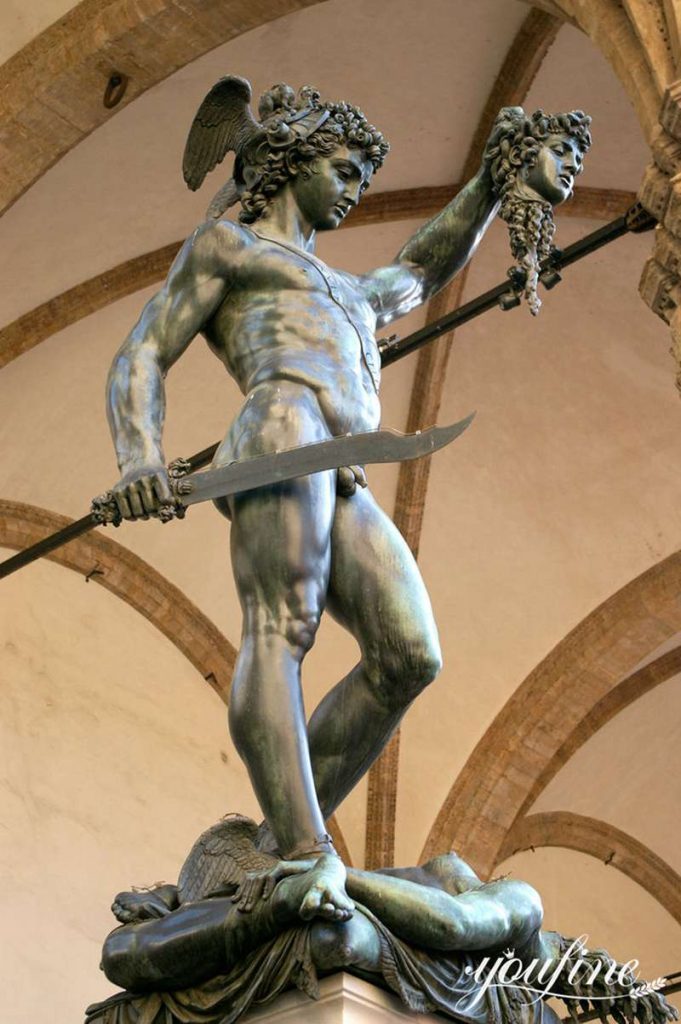
The Secret Of Perseus Statue
Like Michelangelo in his youth, Cellini carved his name on the strap on the statue’s chest. Also, this statue has a little secret. Behind the statue, there is a face on the back of Perseus’s head, which is the author’s face.
The Three Treasures Of Perseus
It took Cellini almost ten years (1545-1554) to make this bronze statue. The original is in the collection of the Bargello Museum, here is a reproduction. Perseus’s success depends on the three treasures he got: a pair of flying shoes, a leather bag, and a dog-skin helmet. Even in the silhouette of the back, you could vaguely see these three treasures. The goldsmith-born Cellini used rich decorations to enhance the appeal of his work. Perseus has a pair of wings on his helmet. Correspondingly, Perseus also has a pair of outstretched wings attached to his two ankles.
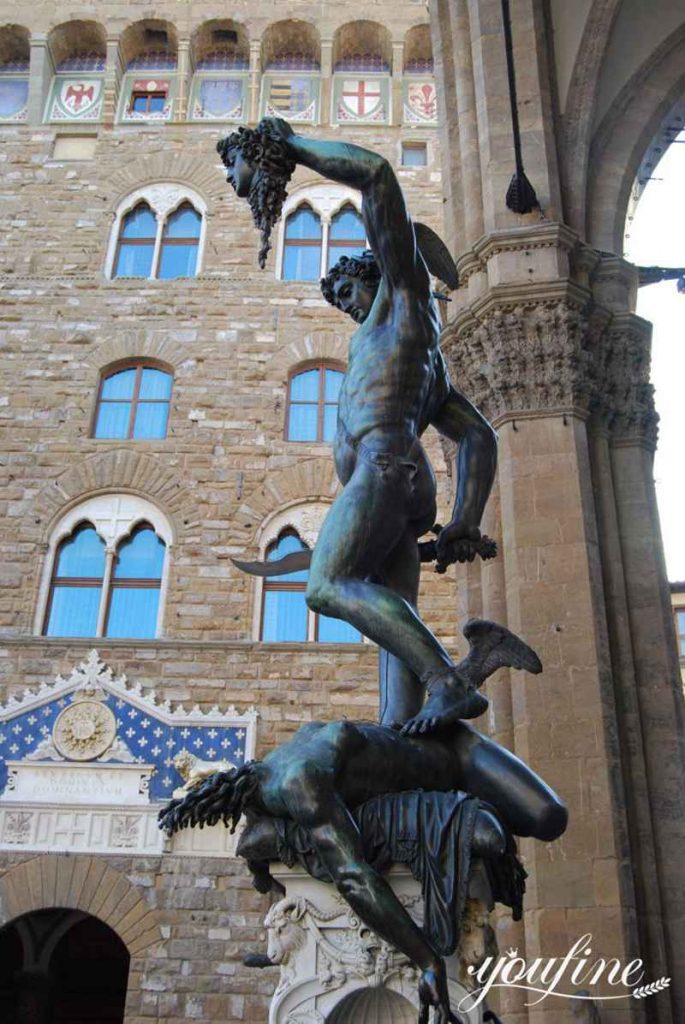
A Faithful Disciple Of Michelangelo
Cellini always saw himself as a faithful disciple of Michelangelo. His autobiography is full of praise for Michelangelo. He often confessed that he had learned a lot from Michelangelo. The posture of “Perseus” shows the influence of Michelangelo’s work “Bacchus” on him. On the sash of “Perseus”, Cellini also imitated the habit of Michelangelo carving his name on it.
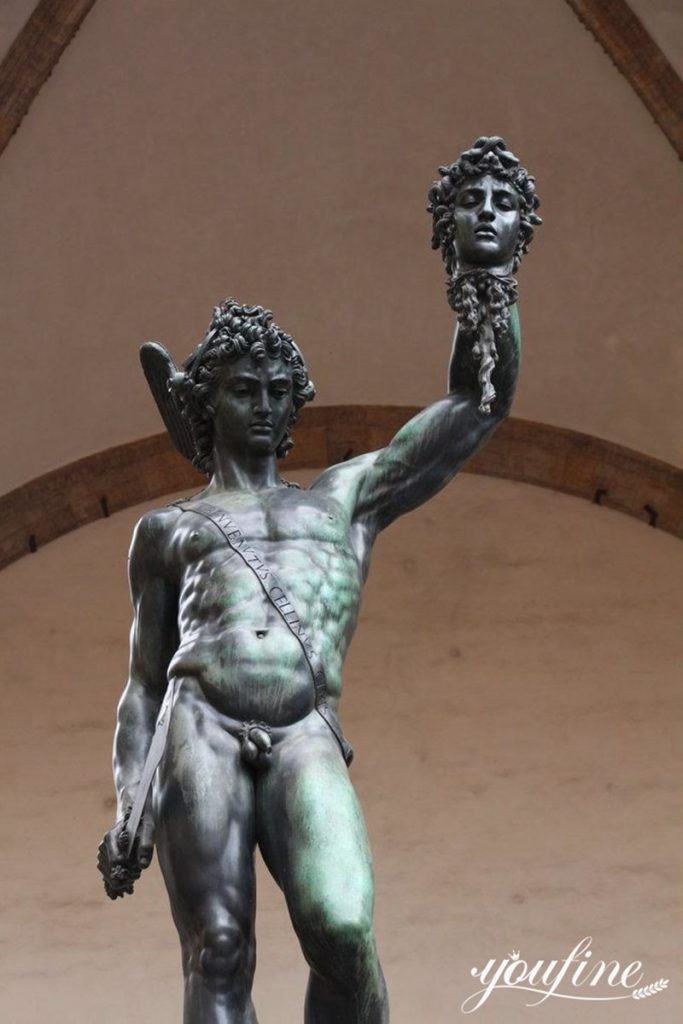
Four Elegant Bronze Statuettes
Its ornate base is also the work of Cellini. Among them, there are four elegant bronze statuettes: Jupiter, Mercury, Minerva, and Danae. Bas-relief on the base, showing “Perseus freeing the nymphs”. The first front is Jupiter in ancient Roman mythology. Also known as Zeus in Greek mythology. Secondly, on the right is the goddess Athena in Greek mythology, and the corresponding name in Roman mythology is Minerva. Then, on the back is Hermes in Greek mythology, and the corresponding name in Roman mythology is Mercury. Then, on the left is Perseus’ mother, Danae, and Perseus as a child.
Youfine Uses The Traditional Lost Wax Method
YouFine has been casting bronze custom sculptures for 39 years. We have customers from all over the world. They commissioned us to cast a lot of Medusa statues for them. Our artists cast these military sculptures using the traditional lost wax method. Among them, our artists use silica sol technology. Well, there would be no white spots on our sculptures. Therefore, the sculpture would not crack and be damaged. There is no doubt that these sculptures would remain monumental for a long time to come.
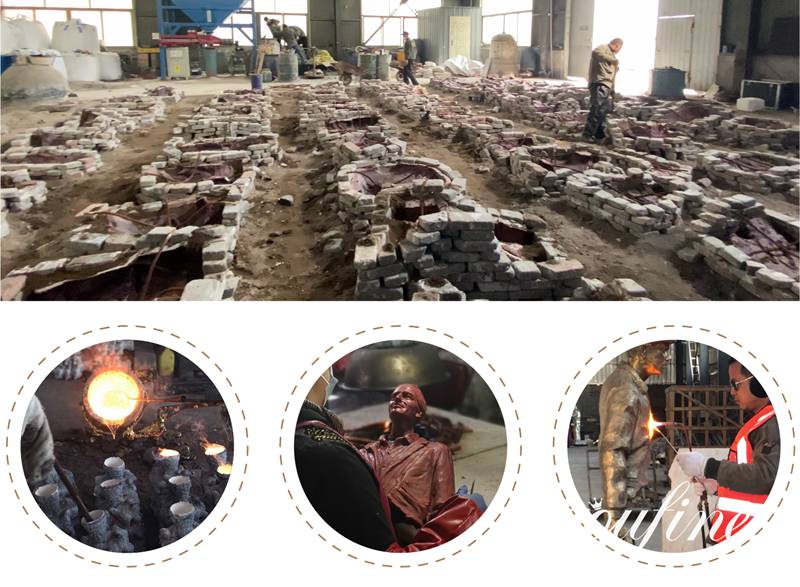
Well, if you like the Perseus and medusa statue, please contact us today. YouFine’s staff would give you a prompt reply and a favorable price.
